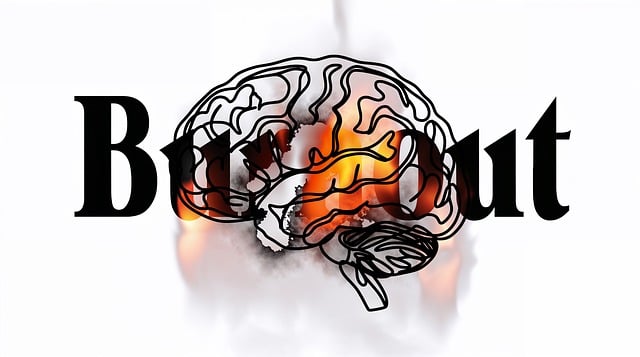Crisis intervention plays a vital role in providing immediate support for individuals facing severe challenges like mental health emergencies or natural disasters. Golden Adjustment Disorder Therapy (GADT) is an effective approach, offering tailored coping strategies and emotional adjustments to help people manage acute stress and prevent burnout. Through cognitive restructuring, mindfulness, workshops, and education, GADT equips communities with proactive crisis handling tools. Key to successful intervention are safe spaces created through active listening, emotional validation, risk assessment, trauma-informed care, and mental health education, all contributing to better outcomes for those in distress.
In moments of crisis, effective intervention strategies are vital for supporting individuals and communities. This article guides you through essential aspects of crisis intervention, offering a comprehensive toolkit for navigating challenging situations. We explore ‘Understanding Crisis Intervention’ and delve into the power of Golden Adjustment Disorder Therapy as a transformative approach. Additionally, we present practical strategies and highlight the importance of creating supportive environments for long-term recovery.
- Understanding Crisis Intervention: A Brief Overview
- The Role of Golden Adjustment Disorder Therapy
- Practical Strategies for Effective Intervention
- Implementing and Sustaining Supportive Environments
Understanding Crisis Intervention: A Brief Overview

Crisis intervention is a crucial process aimed at providing immediate support and guidance to individuals or communities facing severe challenges or traumatic events. It involves a range of strategies and techniques designed to stabilize the situation, assess needs, and facilitate recovery. When a crisis strikes, whether it’s an individual experiencing a mental health emergency or a community dealing with natural disasters, effective intervention can make a significant difference in mitigating harm and fostering resilience.
Understanding the dynamics of crises is essential for practitioners, including healthcare providers, counselors, and first responders. Golden Adjustment Disorder Therapy (GADT) offers valuable insights into helping individuals cope with acute stress and return to a state of equilibrium. By integrating conflict resolution techniques and promoting cultural competency among healthcare providers, intervention efforts can be tailored to diverse needs. Additionally, teaching coping skills development becomes a vital component in empowering individuals to navigate future challenges effectively.
The Role of Golden Adjustment Disorder Therapy

Golden Adjustment Disorder Therapy (GADT) plays a pivotal role in crisis intervention by addressing the underlying emotional and psychological adjustments individuals face during stressful situations. This therapy is designed to help people manage and overcome acute stress, preventing it from escalating into chronic issues like burnout. GADT focuses on enhancing coping mechanisms, fostering resilience, and promoting healthy ways of dealing with challenges.
Through various techniques, including cognitive restructuring and mindfulness exercises, GADT aids in the development of public awareness campaigns that educate communities about stress management. Additionally, it facilitates the organization of Stress Management Workshops, empowering individuals to proactively handle crises before they spiral out of control. By integrating these strategies, GADT not only assists in crisis intervention but also contributes to burnout prevention on a broader scale.
Practical Strategies for Effective Intervention

In the realm of crisis intervention, practical strategies are key to effectively supporting individuals grappling with mental health challenges, especially those diagnosed with Post-Traumatic Stress Disorder (PTSD) or needing Golden Adjustment Disorder Therapy. One powerful approach is integrating trauma-informed care into intervention protocols. This involves creating safe spaces, actively listening without judgment, and validating the individual’s experiences of trauma. Mental Health Education Programs Design can play a pivotal role by equipping professionals with the knowledge to recognize subtle signs of distress and respond appropriately.
Additionally, conducting thorough Risk Assessment for Mental Health Professionals is essential before engaging in crisis intervention. This assessment helps identify potential risks, both to the client and to the professional, ensuring a safer environment for support. By combining these practical strategies—trauma-informed care, education programs, and risk assessments—crisis intervention can become more effective, fostering better outcomes for those seeking help.
Implementing and Sustaining Supportive Environments

Creating supportive environments is a cornerstone of effective crisis intervention strategies. This involves fostering spaces where individuals feel safe to express their emotions and fears openly. In the context of Golden Adjustment Disorder Therapy (GADT), professionals can facilitate this by employing various techniques, such as active listening and validating emotional experiences. By implementing these approaches, individuals facing crises begin to perceive their surroundings as more understanding and less overwhelming, which significantly enhances their ability to cope.
Stress Reduction Methods and Communication Strategies play a pivotal role in sustaining these supportive environments. Encouraging open dialogue allows for the identification of triggers and risk factors, enabling practitioners to tailor interventions accordingly. Furthermore, teaching individuals effective Stress Management techniques empowers them to navigate future challenges more adeptly. This holistic approach not only supports immediate crisis resolution but also equips individuals with long-lasting coping mechanisms.
In conclusion, crisis intervention strategies play a vital role in helping individuals navigate challenging situations. By understanding the fundamentals of crisis intervention through methods like Golden Adjustment Disorder Therapy and implementing practical strategies, we can create supportive environments that foster recovery and resilience. Sustaining these environments requires collective effort and an ongoing commitment to enhancing mental health support systems.











